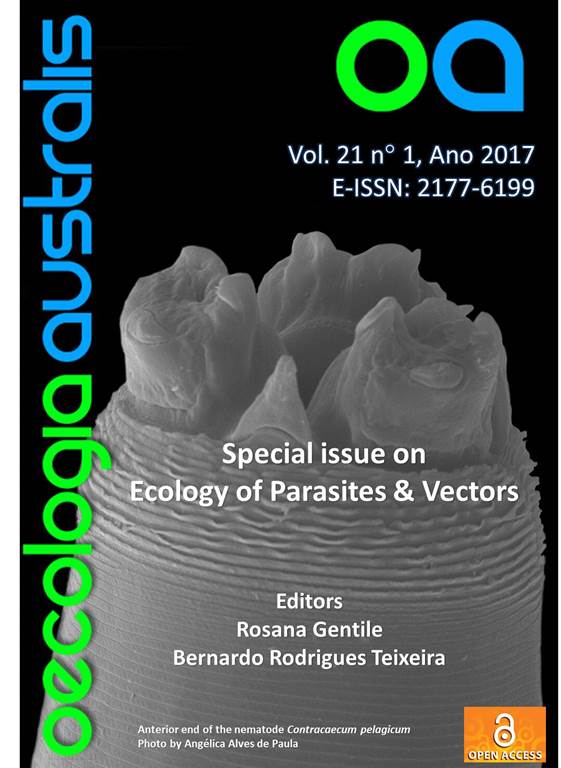ECOLOGICAL ASPECTS OF NEMATODE PARASITES OF Didelphis aurita (DIDELPHIMORPHIA, DIDELPHIDAE) IN URBAN-SYLVATIC HABITATS IN RIO DE JANEIRO, BRAZIL
DOI:
https://doi.org/10.4257/oeco.2017.2101.06Keywords:
Atlantic Forest, Ecology, Host-parasite interaction, Marsupials, ParasitismAbstract
Despite the widespread occurrence and the great number of studies of the common opossum Didelphis aurita (Didelphimorphia, Didelphidae), there is a serious lack of information about helminth parasitism in these species. The synanthropic characteristic of these animals may influence their parasite fauna and the ecological parameters. We evaluated the abundance, intensity, prevalence and spatial aggregation of the most abundant nematodes of the large intestine and stomach, recovered from the common opossum D. aurita, in Pedra Branca State Park and its surroundings, which includes the FIOCRUZ Atlantic Forest Campus, Rio de Janeiro, Brazil. We investigated the effects of anthropic disturbances on the helminth populations comparing the parameters in relation to host habitat types, season and host gender in order to understand the ecological host-parasite interaction. The animals were sampled in three different habitats. We conducted eight small mammal samplings in different seasons and collected 48 individuals of the common opossum. The nematode species found in the large intestine were Aspidodera raillieti and Cruzia tentaculata while Turgida turgida was found in the stomach. Cruzia tentaculata was the species with the highest abundance, intensity and prevalence indices. The three species had a highly aggregated distribution. No species had significant difference in prevalence when compared with host habitat types, host gender or season. Cruzia tentaculata had higher intensity in the rainy season, which suggests that rainfall contributes to the development of the life cycle of this helminth. Turgida turgida had higher abundance in the disturbed forest habitat, suggesting that the presence of intermediate hosts may be favoured by the characteristics of this environment.


